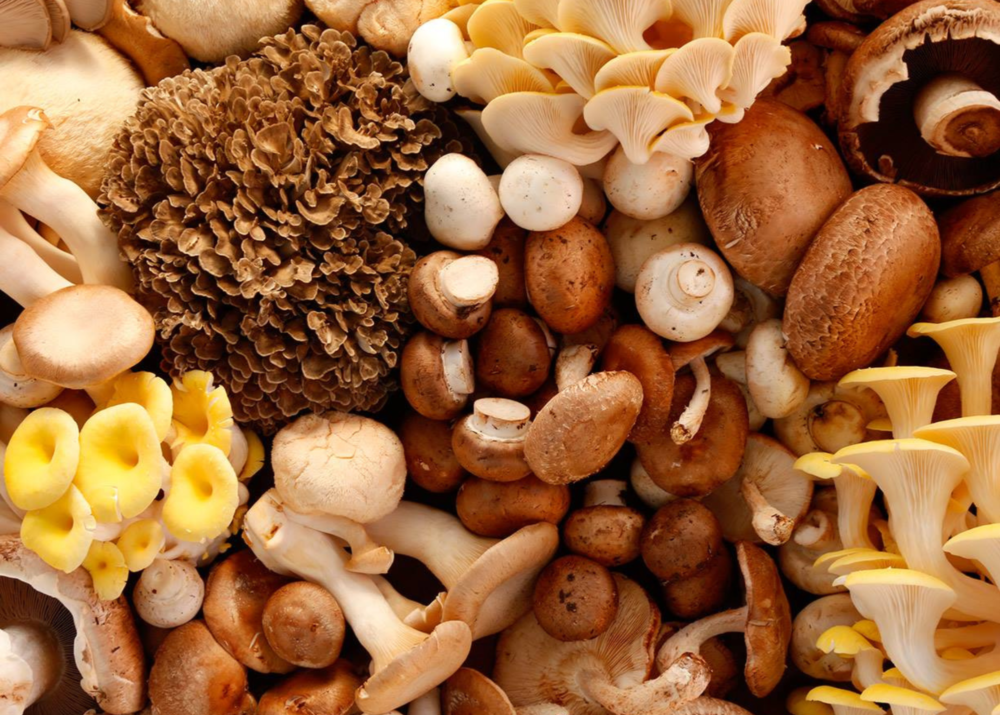
People who live in Chester County, PA take mushrooms so seriously that on New Year’s Eve, a mushroom-shaped crystal ball drops at the arrival of the new year in Kennett Square, PA. Located 35 miles west of Philadelphia, this quaint little town is known as The Mushroom Capital of the World. It produces over a million pounds of mushrooms per day and is responsible for growing 68% of the nation’s 946 million pounds of mushrooms annually.
Phillips Mushroom Farms, based in Kennett Square, is the largest grower of specialty mushrooms and a leader in overall mushroom production. For over 90 years and through four generations, the Phillips family has focused on innovation and quality to provide consumers with the best-tasting mushroom.



In 1927, mushroom farming was re-directed by mushroom pioneer William Phillips when he experimented with ice to control temperatures in mushroom houses. This innovation led to growing mushrooms all year. Today, Phillips produces more than 57 million pounds of mushrooms per year,
Linda Phillips Steller is the manager of the Woodlands at Phillips. Once the family farmstead, the 250-year-old home was converted to a retail store on the same property as a mushroom museum and several mushroom houses. The shop is housed in the original 1828 family farm home that the Phillips family acquired in 1890. Visitors can also see the Farm’s mushroom exhibit to learn about the Farm’s history and the science of mushroom growing. Other larger farms are located throughout Chester County.
Mushroom Nutrition
I caught up with my friend and registered dietician, Anthony Dissen, MPH, MA, RDN, CPH, a tenured instructor of health science at Stockton University in Stockton, New Jersey, to talk about the nutrition behind mushrooms. He says, “Mushrooms are reliable sources of riboflavin, niacin, and pantothenic acid, along with the minerals selenium and copper. For vegans, this is good news, as those eating a vegan diet have often been found to have lower intakes of selenium, especially when compared to people who eat finfish and shellfish.” For the record, a cup of raw mushrooms contains 2.2 grams of protein.
According to the Mushroom Council, all mushrooms contain some vitamin D1, but mushrooms have the unique ability to increase vitamin D amounts due to UV light. Similar to humans, mushrooms naturally produce vitamin D following exposure to sunlight. The plant sterol, ergosterol, converts to vitamin D when exposed to light. The “morrel” of the story is to eat your mushrooms!
If you’re wondering about “raw vs. cooked,” Dissen adds, “Ideally, mushrooms should be consumed cooked, as raw mushrooms can contain harmful toxins and pathogens that are deactivated when cooked.”
More on Mushrooms
Perhaps you’ve cruised the produce department wondering about all the mushrooms–which to use? How to choose the best mushroom? Which mushroom has the best texture? Can you make a sturdy veggie burger or mushroom crabcake? It’s time to think outside the mushroom cap and look at other mushrooms and how you can incorporate them into your diet.
I find the portabella to have a texture that works well in making burgers and stews. If I am making a mushroom steak, maitake, also called Hen of the Woods, is perfect for creating a robust and well-textured mushroom dish. Many chefs use the pompom (lion’s mane) to create plant-based crab cakes because of their flaky texture.
Selecting and Storing Mushrooms
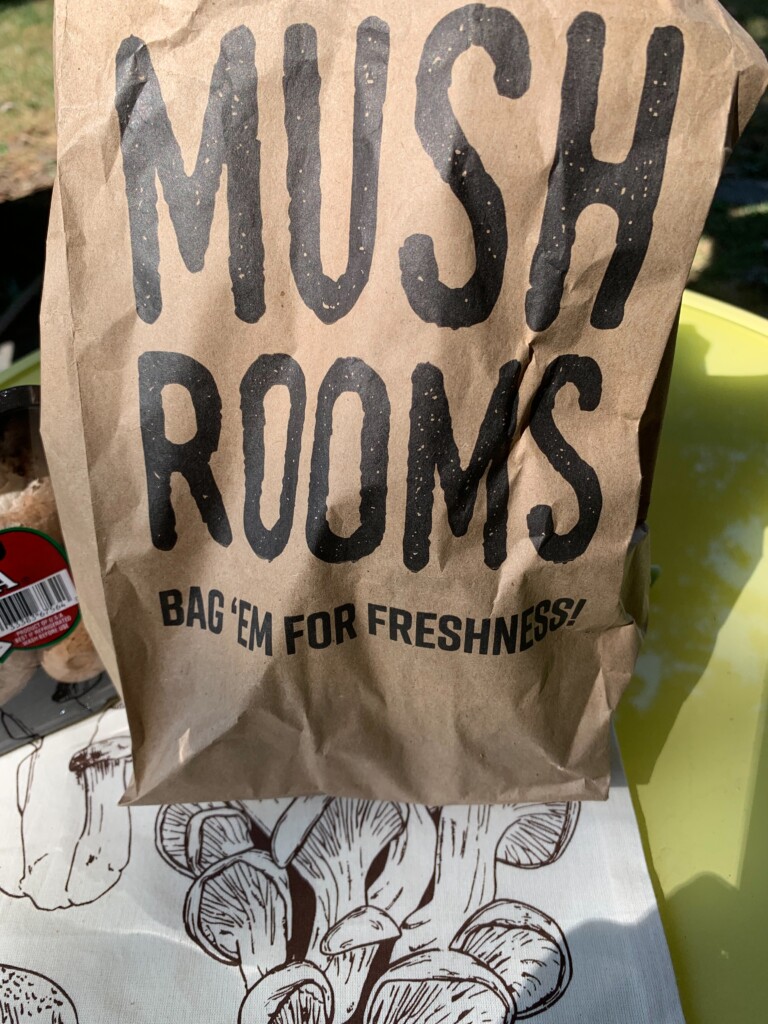
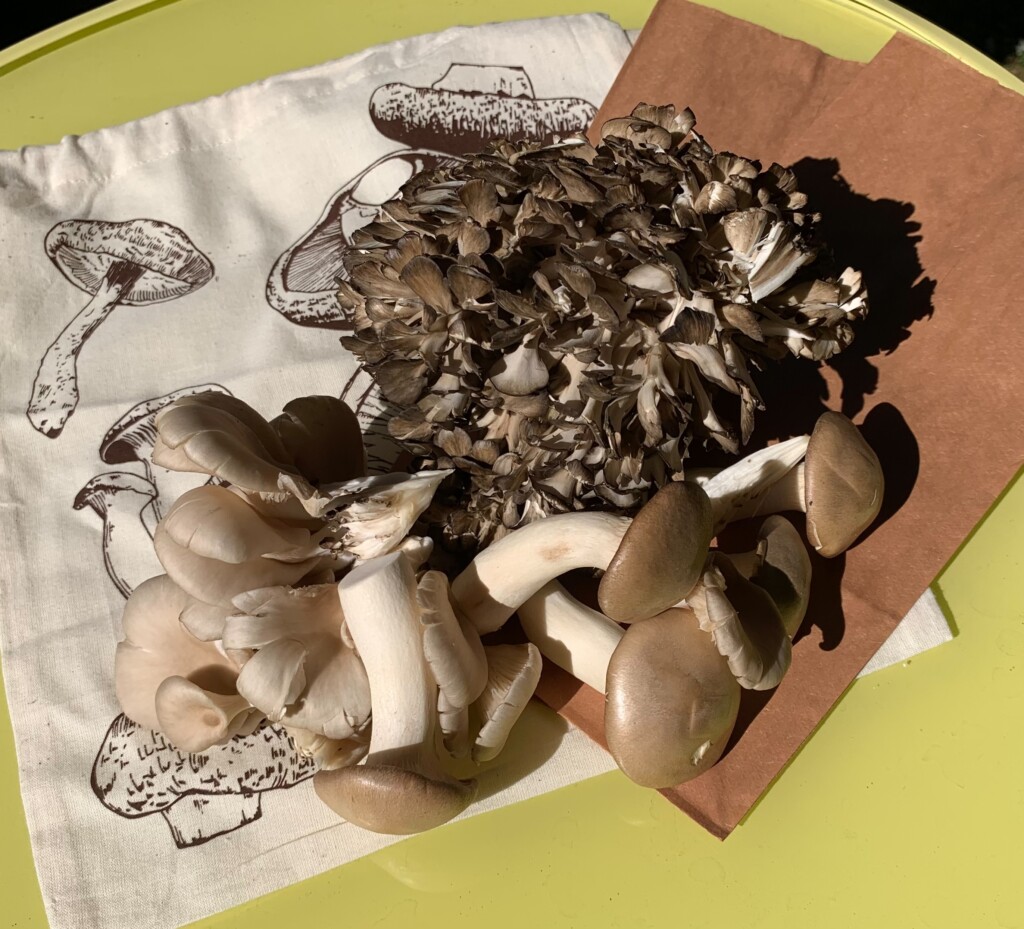
Many grocers will sell loose mushrooms in chilled bins. Picking loose mushrooms is always your best choice. The mushrooms should be firm, fresh, and with a smooth cap. A closed veil under the cap indicates a delicate flavor. If you see an open veil with exposed gills, you will have a richer flavor. A veil (velum) is one of several structures in fungi, especially the thin membrane that covers the cap and stalk of an immature mushroom.
If you are buying pre-packaged (with plastic wrap) mushrooms, check the mushrooms for color and any bruised areas. As soon as you get home, transfer the mushrooms to a brown paper bag so the fungi can breathe. Mushrooms will stay fresher and last longer when stored in a brown paper bag closed at the top and refrigerated. At the Phillips, all varieties of mushrooms are stored in brown bags and ready for purchase.
Portobello or Portabella?
In Northern Italy, portobella mushrooms are called “cappellone,” which means “big hat”. The portobella is a large dark, mature, cultivated mushroom noted for its meaty texture that is of the same variety as the cremini, sometimes called “Baby Bella.” If you have noticed two spellings, the Mushroom Council is trying to standardize the spelling to portabella. Whichever spelling you use, they’re delicious in many recipes, from mushroom burgers to stews.
New Trends in Mushrooms
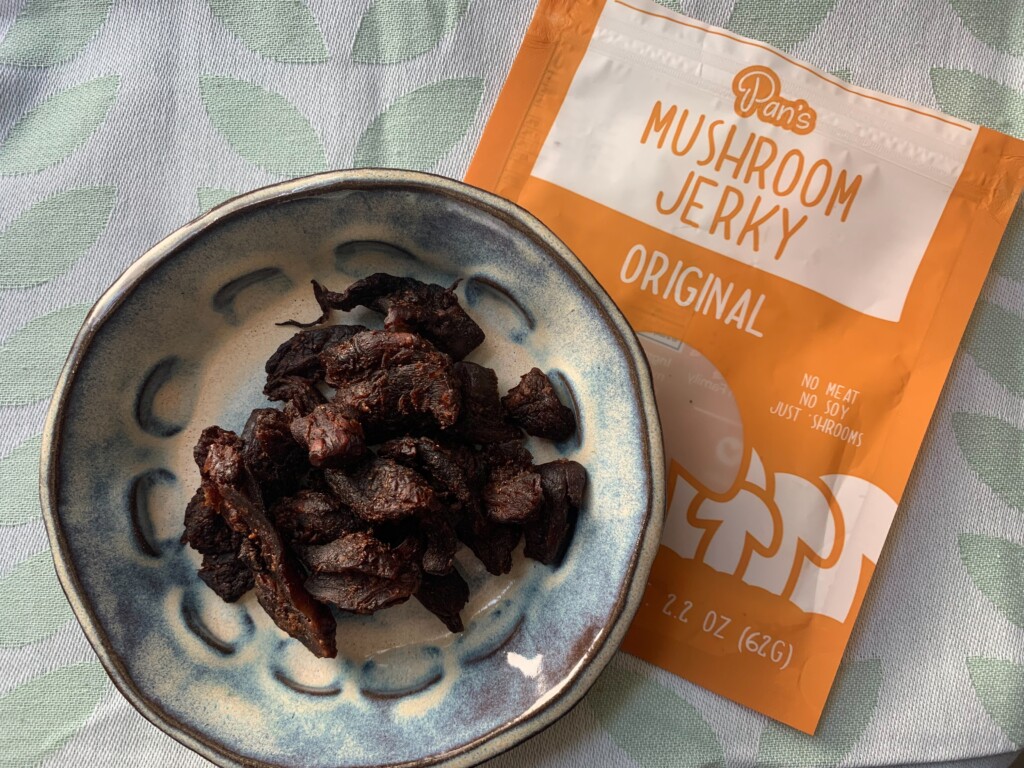
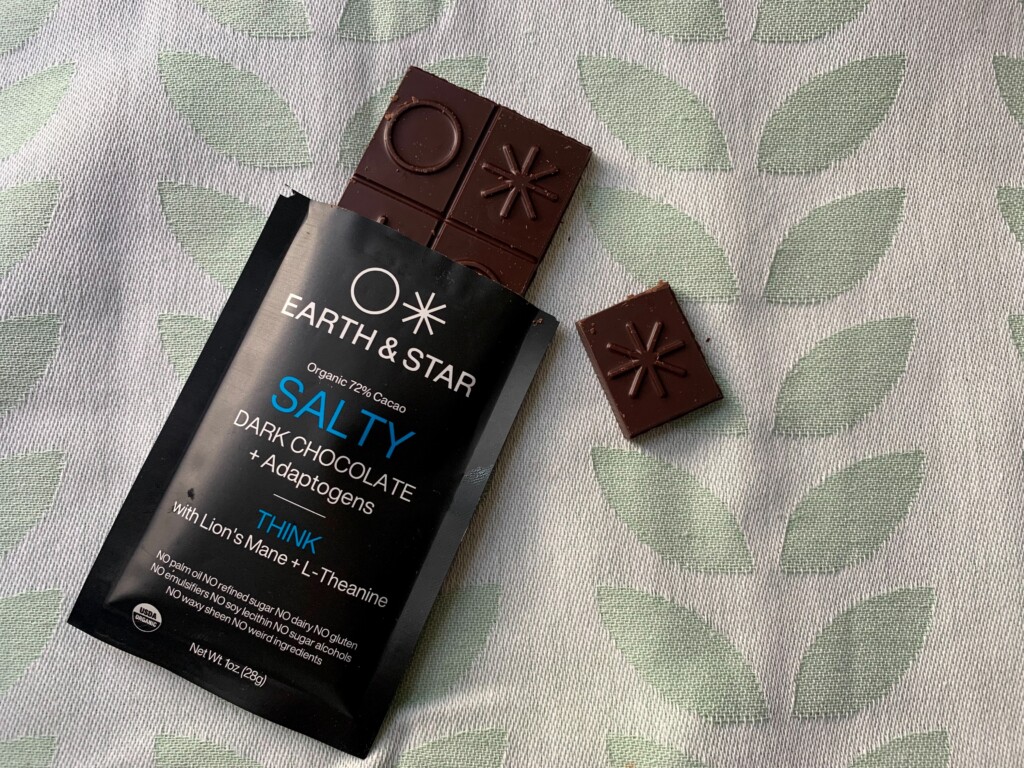
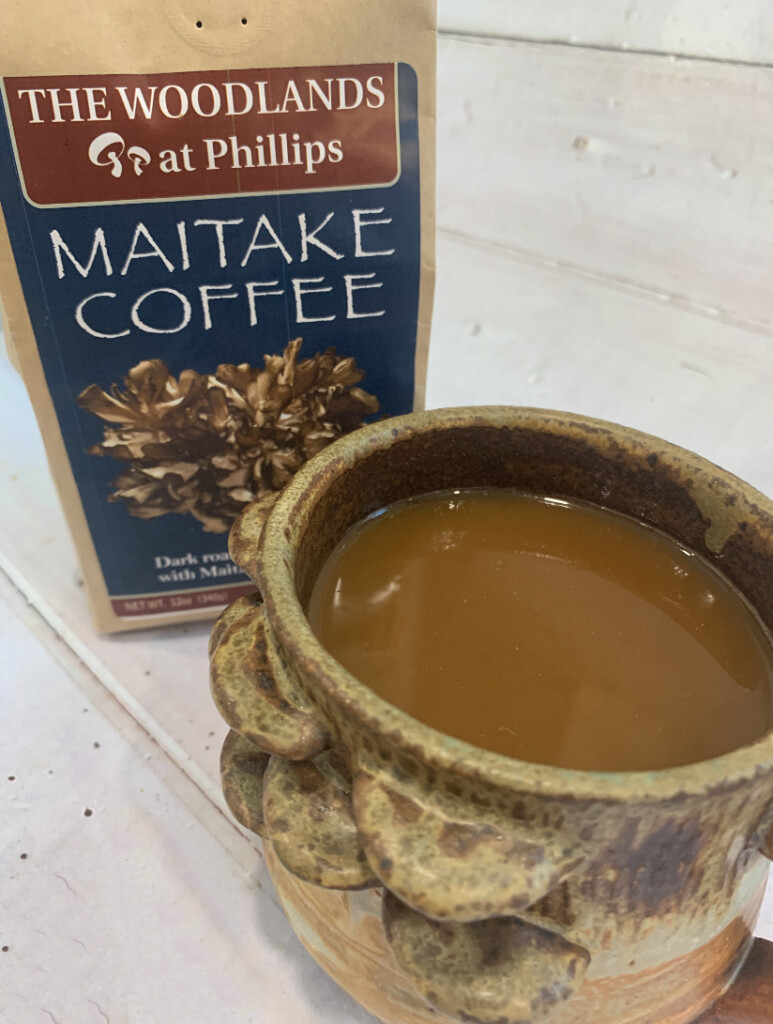
Mushrooms have become the new trend in foods, from teas, soup mixes, skin creams, and more. Here’s a quick look at a few favorites at the Woodlands:
Coffee
I was drawn to many new products that were mushroom-based, but what stood out most was maitake coffee. Phillips dehydrates the mushrooms and sends them to West Chester-based Golden Valley Farms Roasters, a family-owned roastery of organic and fair-trade coffee. With an eye on local relationships, it was important for Phillips to find a coffee roaster whose message matched theirs. The coffee is robust, the taste is smooth, and it doesn’t taste like mushrooms. It is suggested to use a French press for preparing the coffee. The coffee is solely available at the Woodlands.
According to Maryann Baldassarre from GVFR, “Mushroom-infused coffees are quite popular. People report that mushroom coffees can add nutrients, support brain function, and support healthy blood sugar. Others also report that mushroom-infused coffee can be a de-stressor.”
Mushroom Jerky
When Portland-based Michael Pan, founder of Pan’s Mushroom Jerky, visited his extended family in Malaysia in 2008, he tried many new foods. His family fed him a snack he couldn’t quite identify. It turned out he was eating a shiitake mushroom. He admits to falling in love with the flavor and texture of this snack. He knew at first bite that it was something he wanted to share with the rest of the world. He’s proud to share a family recipe in every bag of Pan’s Mushroom Jerky.
Pan says, “As attitudes change about how our lifestyle choices impact global climate change, animal welfare, and personal health, people are choosing to add more plant-based foods to their diet.” Mushrooms are an approachable plant-based option.
Chocolates
Earth and Star produces a delicious lion’s mane chocolate bar called SALTY. A full line of Earth and Star is available at Phillips, and I can tell you that as chocolate bars go, it was “calmly” sweet, with a beautiful fruity aroma and a creamy mouthfeel. Its taste was not astringent at all, and no mushroom flavors were deducted. It might be delicious in your favorite chocolate chip recipe! As the folks at Earth and Sun say, “the future is fungi.”
Research shows that combining mushrooms and chocolate allows one to benefit from two great superfoods. Mushrooms are reportedly one of nature’s greatest healers, powerful enhancers of the immune system, and rich in immune-activating beta-glucans, minerals, vitamins, antioxidants, and polysaccharides, not to mention the vitamin D1.
Back to Basics
Just eat mushrooms. They are a versatile ingredient in any plant-forward dish. Registered dietician Dissen prefers a roasted mushroom cap stuffed with bread crumbs, garlic, nutritional yeast, ground walnuts, and fresh basil.
My favorite mushroom recipe comes from Rouxbe, the online cooking school. It’s called mushroom meat and works well with everything from tacos to pasta sauce. And it is oil-free.
Putting a Cap on Mushrooms
The most important thing about mushrooms is buying fresh mushrooms and storing them in a brown paper bag. Whether you air-fry them, roast them, or use them in sauces, you cannot go wrong. If you’re in Kennett Square, stop at the Woodlands and hear firsthand the rich history of mushrooms and their importance on your plate.
About the Author
Char Nolan is a serious crusader for plant-based education, armed with a degree in public health from Philadelphia’s Temple University. She teaches nutrition and plant-based cooking throughout Philadelphia, and in many underserved communities. Char holds a certificate in plant-based nutrition from eCornell and completed Rouxbe’s Plant-Based Professional Certification course in 2015. In 2019, Char completed post-graduate course work in social media marketing at the University of the Arts. When she is not cooking or teaching, she manages social media accounts for several plant-based influencers.
Char prides herself on learning everything she knows about cooking from growing up in her grandparents’ Italian restaurant. Her favorite vegetables are Brussels sprouts and kale, of course. Char originally hails from Queens, NY, but has lived in Philadelphia most of her adult life. She is a former Peace Corps Volunteer.
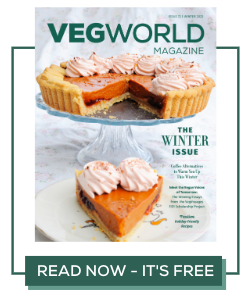

[…] more about the iconic mushroom capital in Vegworld Magazine. […]